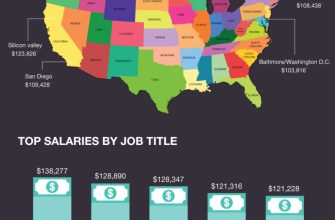Blue Vests and Big Dreams
In 1962, a no-frills store opened in Rogers, Arkansas. Today, that store’s descendant is the largest private employer in the world. That’s Walmart.
Step into any of its 4,600 U.S. locations, and you’ll find people who started unloading trucks and now oversee multimillion-dollar operations.
Last year alone, more than 180,000 associates moved up the ladder in the U.S. That’s nearly 500 a day.
The real surprise? Many of them don’t have degrees. What they do have is a name tag, a schedule, and a shot.
For all the talk about dead-end retail, Walmart quietly rewrote the playbook.
So the real question isn’t why people get hired here – it’s why so many stay.
Walmart at Work – Scale, Values, and the Machine Behind It
Service. Respect. Excellence. Integrity. At Walmart, these aren’t decorations.
They’re used to set expectations, measure behavior, and steer decisions.
As of 2025, the company employs over 2.1 million people globally, with 1.6 million in the U.S. Alone, which makes Walmart the biggest private employer in the world.
But size is just the headline.
The real action is in movement. In 2024, Walmart raised its average U.S. hourly wage to over $18.
It wasn’t a favor. It was survival in a tight labor market. The company promoted more than 180,000 U.S. workers that same year.
These weren’t corporate ladder stories. These were cashiers stepping into leadership. Stockers running teams by year’s end.
Walmart by the Numbers (2024–2025)
- 2.1 million associates worldwide
- 1.6 million in the United States
- 180,000 U.S. promotions in 2024
- 86% of U.S. store and warehouse management positions were filled internally
The average time to promotion? Eight months. And the payoff is real.
Store managers earn around $128,000 in base pay. Add performance bonuses, and the totals climb higher.
Walmart doesn’t wait for outside résumés. It looks at who’s already clocked in.
After 2020, the company pushed harder on inclusion.
“Everyone included” became the company line, but it didn’t stop there.
Support programs popped up for veterans, caregivers, and associates working across languages.
Some of it was reactive. Some was strategy. Either way, it showed up in policy.
The structure is the constant. Walmart tracks everything – performance, turnover, promotion speed, and manager pipeline.
The values are framed on walls, but the system is built to enforce them.
Quietly, efficiently, and with little room for drift.
Inside the Job Grid – What Roles Really Look Like
Walk through a Walmart Supercenter and you’re stepping into a layered machine.
Every aisle, every stocked shelf, every truck arriving behind the store is tied to a job.
Often, to dozens. And while the cashier might be the face of the experience, the roles behind the scenes are the engine.
Start with the store floor. In 2025, Walmart’s in-store jobs still make up the largest share of its workforce.
Cashiers, sales associates, stockers, team leads – the titles haven’t changed much, but the scope has.
A grocery associate today might be unloading frozen freight at 4 a.m., updating inventory via handheld, and answering customer questions within minutes.
And it’s not one-size-fits-all.
A stocker in a high-volume Supercenter in Dallas is operating under different demands than one in a smaller Neighborhood Market.
Above the floor are department supervisors, often called coaches, who manage schedules, inventory, and task flow.
These roles now double as talent scouts, because upward movement is fast.
Walmart’s own data shows the average time to first promotion is eight months.
In practical terms, that means someone hired in January could be training others by fall.
Walmart Job Categories (2024–2025)
| Job Area | Typical Role | Starting Pay | Work Environment |
|---|---|---|---|
| In-Store Retail | Cashier, Stocker | $14–$18/hr | Customer-facing, shift-based |
| Supply Chain | Order Filler, Loader | $15–$20/hr | Physical, warehouse-based |
| Transportation | Class A Driver | $88k–$110k/year | Long-haul, fixed routes |
| Corporate & Tech | Data Analyst, Engineer | $60k–$120k+ | Office or hybrid schedule |
Beyond the storefront, Walmart’s supply chain network is a freight-moving organism.
The distribution centers and fulfillment hubs work on a different clock entirely. Many run 24/7.
Inside, freight handlers and order fillers process incoming goods, stack pallets, load trucks, and track everything through RFID and WMS systems.
It’s loud, physical, and clocked by the minute.
Entry-level roles often start with tasks like loading 40-pound boxes onto belts or operating pallet jacks across 1 million-square-foot spaces.
Then there’s the “elite fleet.” That’s Walmart’s term, not mine.
The company employs over 12,000 Class A truck drivers across the U.S., all part of its private fleet.
In 2022, Walmart announced a pay range of $95,000 to $110,000 for new drivers in their first year.
By 2024, the average hovered around $88,000. That puts it above industry averages by a wide margin.
Drivers cover stable routes, get home regularly, and rarely switch carriers – something rare in long-haul trucking.
Walmart Fleet Driver Requirements
- Valid Class A CDL
- 30+ months of full-time Class A driving in the last 4 years
- Clean safety record
- Completion of Walmart’s Fleet Development Program (if internal)
On the corporate side, job titles stretch into merchandising, data science, software engineering, and pharmacy logistics.
Many of these roles are based in Bentonville, Arkansas, while tech jobs often land in Walmart Global Tech hubs like Hoboken or Sunnyvale.
In 2024, the company expanded roles tied to e-commerce, last-mile delivery, and AI systems built to optimize everything from shelf placement to driver routing.
Walmart also holds a foothold in healthcare.
In-store pharmacies, vision centers, and Walmart Health clinics offer work for pharmacy techs, opticians, and insurance-facing administrators.
Each requires different credentials, but all fall under the same larger umbrella: retail healthcare built into the shopping trip.
That’s what Walmart jobs look like on the ground. Different clocks, different tools, one system.
And every part of it is tracked, measured, and under pressure to move faster.
Getting In – How Walmart Hires and Who Makes the Cut
The process doesn’t start with a handshake. It starts online. You fill out a profile, punch in your availability, select a role, and click submit.
For most hourly jobs, that’s followed by a timed multiple-choice assessment.
Situational questions, work ethic questions, customer service hypotheticals.
It’s quiet, algorithmic, and fast.
The application itself takes 15 to 20 minutes. The test, another 20 to 30. You’re evaluated before a manager ever sees your name.
And that test matters. It screens thousands out before a human even looks.
Strong scores increase the odds of getting called in.
Walmart Hiring Flow (Typical for Hourly Roles)
- Online Application
- Assessment Test
- Screening by Hiring Team
- Interview Invitation
- Conditional Offer
- Background Check / Drug Test
- Orientation
Walmart hires at 16 for most store roles. Some jobs – pharmacy tech, Sam’s Club positions, equipment operation – require you to be 18.
No college degree needed for entry-level positions.
A high school diploma is preferred, but not mandatory, for most hourly jobs.
Some management tracks and specialty roles require certifications or experience.
But for the bulk of openings, what you’ve done matters less than how you perform in the process.
If your application passes, a store or hiring center screens it.
They check for matching availability, location, and basic qualifications.
You’ll usually hear back within a few days to a couple of weeks.
Interviews for hourly roles often happen in-store and may be one-on-one, panel, or group-based.
Sometimes they run hiring events. Some involve hands-on tasks, like a scavenger hunt or customer service simulation.
Common Interview Formats
- Hourly associate: One-on-one or group interviews
- Team lead or manager roles: Panel interviews, scenario-based questions
- Corporate or tech roles: Phone screen, technical tests, multiple rounds
Walmart uses behavioral interviews. If you’ve worked retail before, they’ll want to hear specifics.
If you haven’t, they’ll ask how you’ve handled problems, dealt with people, or followed instructions.
“Tell me about a time you made a mistake.” “What would you do if a customer got upset?” “How would you resolve a conflict with a coworker?” That kind of thing.
The STAR method – situation, task, action, result – gets you through.
Get through the interview, and you may get a conditional offer.
“Conditional” means the job is yours unless something fails the checks: background screen, drug test, or eligibility.
Some roles, especially warehouse and driving jobs, require a clean drug test.
Most do a basic background check.
If everything clears, you’ll get a start date for orientation.
That’s a few paid days of videos, safety modules, paperwork, and company culture.
Then it’s onto the floor. Usually shadowed. Usually fast. There’s not much sitting around.
Walmart hires at scale because it runs at scale. They’re not looking for perfect résumés.
They’re looking for people who can show up, move quickly, and learn on the go.
The Tradeoff – What Walmart Gives (and What It Tracks)
Walmart doesn’t hand out perks like a startup throwing pizza parties.
Everything is measured. Everything serves a purpose. But the benefits are real, and in some cases, surprisingly broad.
Especially for hourly workers in retail, where the baseline can be brutal elsewhere.
Start with health coverage. In 2025, full-time associates can still get medical plans starting at around $30 per biweekly paycheck.
That includes preventive care and telehealth. Even part-timers can qualify now, though eligibility depends on hours and tenure.
Vision and dental are optional add-ons. The company also kicks in toward HSAs or reimbursement accounts on certain plans.
There’s no gold-plated insurance here, but it covers the basics and then some.
Then there’s the 401(k). Walmart matches dollar-for-dollar up to 6% of eligible pay.
That match kicks in after a year for hourly staff and vests immediately.
In 2024, the company dropped $1.6 billion into employee retirement accounts.
Around 704,000 U.S. associates participated.
Walmart Benefits Comparison (2024–2025)
| Benefit | Full-Time | Part-Time |
|---|---|---|
| Health Insurance | Yes (after start) | Yes (after tenure met) |
| 401(k) w/ Company Match | Yes (after 1 year) | Yes (after 1 year) |
| Paid Time Off (PTO) | Yes | Limited (accrued) |
| Live Better U (Tuition) | Yes (Day 1) | Yes (Day 1) |
| Walmart+ Membership | Discounted or free | Discounted |
PTO is another one of those things Walmart simplified.
Instead of vacation, sick leave, and personal days all tracked separately, it’s just PTO.
You earn it based on hours worked and tenure.
They also added something called Protected PTO – a portion of hours you can use last minute without risk of penalty.
It’s there for sick days, family emergencies, or anything unplanned.
In retail, where missed shifts can get you cut fast, that policy matters.
Walmart also throws in a 10% associate discount after 90 days.
It works on general merchandise and fresh produce, and during holiday windows, it expands to almost all food. Alcohol and tobacco are excluded.
Employees also get a free or discounted Walmart+ membership, which covers free shipping, delivery perks, and fuel discounts at partner stations.
Live Better U Snapshot
- Covers 100% of tuition and books
- Available from Day 1 of employment
- Applies to degrees, trade programs, and certificates
- No out-of-pocket cost
- Partnered with accredited universities
That education perk, once $1 a day, is now fully paid.
Walmart covers the entire bill for approved degrees and certifications through Live Better U. The offerings are broad: business, supply chain, cybersecurity, and healthcare support.
It’s available to part-timers too, with no waiting period.
And it ties into Walmart’s internal pipeline. Degrees earned through LBU have landed people in roles like accounting, operations, and data analytics.
There’s also Walmart Academy. That’s where people go for internal training when moving up.
It’s part classroom, part in-store lab, and heavily focused on leadership.
They’ve also created custom training paths for high-demand roles like pharmacy tech, optician, and CDL truck driver.
Wellness gets attention too, but it’s utilitarian.
Free counseling through the EAP. Health coaching. Weight management programs.
In some cases, Walmart covers travel and procedures at the Center of Excellence hospitals for major surgeries – spine, heart, and cancer.
Associates pay nothing out of pocket for those trips if approved.
Schedules? That’s been a friction point for years.
In 2024, Walmart doubled down on its “core hours” system, which gives full-timers predictable shifts week-to-week.
There’s also an app where associates can check schedules, request time off, or swap shifts without chasing a manager.
For a company this size, offering even a little control over your week makes a difference.
Walmart doesn’t pretend these perks are charity. They’re investments with data behind them – to attract, retain, and control turnover.
And the math shows it: turnover drops sharply after year one, and those who stay tend to keep moving up.
Whether the job is short-term or long haul, the structure is built to keep people moving.
Moving Up – How Promotions Actually Happen at Walmart
The ladder at Walmart isn’t hypothetical. It’s wide, visible, and busy. In 2024, over 180,000 associates in the U.S. got promoted.
That averages out to roughly 500 per day. And most didn’t come from polished résumés or LinkedIn recommendations.
They came from inside. That’s not branding. That’s how the machine runs.
Walmart tracks time-in-role down to the week. According to internal data, the average time from entry-level hire to first promotion is eight months.
Sometimes less. A cashier hired in February can be supervising a team by fall if the metrics line up and the attendance record holds.
It’s fast, but it’s not random. Managers are told who’s eligible. Talent reviews flag who’s ready.
Common Internal Tracks
- Cashier → Self-Checkout Host → Department Supervisor → Coach → Store Manager
- Stocker → Stocking Coach → Area Manager → Operations Lead
- Pharmacy Tech Trainee → Certified Tech → Health & Wellness Coach
- Warehouse Associate → Lead → Area Manager → Transportation Planner
Internal promotion is more than policy – it’s Walmart’s labor model.
In FY2024, 86% of store, club, and supply chain management roles in the U.S. were filled by people already working at the company.
Over 75% of salaried managers started as hourly workers.
That includes store managers pulling six-figure base salaries and district leads running multiple locations.
And the paybacks are real. In 2024, Walmart raised average store manager base pay to around $128,000.
That doesn’t include bonuses, which can reach up to 200% of base if performance targets are hit.
For those stepping into Market Manager roles – the people overseeing 6 to 10 stores – total compensation can stretch into the high $200k range.
In peak years, some top market leaders have cleared $500,000 with bonuses stacked.
Walmart Promotion Metrics (U.S., FY2024)
- 180,000 promotions
- 86% of management roles filled internally
- 75% of salaried store leaders started hourly
- Avg. store manager base pay: $128,000
- Market Manager total potential comp: $250k+
Walmart Academy helps grease the path. It’s not an online module – it’s an in-person training setup, often housed in larger Supercenters.
Associates moving into lead or supervisor roles attend sessions on store operations, leadership, and performance metrics.
It’s structured. It’s fast. And it’s tied to promotion decisions.
Some pathways are trade-based.
Through internal “Career Pathways” launched in 2022, Walmart trains HVAC techs, pharmacy technicians, CDL drivers, and vision center opticians.
These roles serve the company directly – fixing store systems, staffing healthcare locations, or filling the trucking pipeline.
Instead of hiring from the outside, Walmart turns cashiers or warehouse workers into certified pros.
The Live Better U education benefit also plays into mobility.
Associates use it to earn business degrees, complete supply chain certifications, or pick up project management skills.
Once completed, those credentials can qualify them for salaried corporate or field roles – everything from accounting to logistics coordination.
No debt. No out-of-pocket cost.
And it’s not all upward. Some moves are sideways. A floor associate might shift to the warehouse.
A department lead might take a merchandising role with a regional setup team.
There’s mobility both vertical and lateral, and the company uses internal dashboards to map talent and push people toward openings.
The pattern’s clear. Walmart doesn’t rely on outside recruitment to fill core leadership roles.
It builds its own bench. And if you’re on that bench, they’re tracking how fast you can run.
Paychecks and Pressure – What the Work Really Pays
Walmart doesn’t hype salary. It posts the range, sets the schedule, and lets the scale do the talking.
And for a retail job in 2025, the money is… pretty strong. For some roles, it’s more than strong. But you earn it. And that’s not a slogan.
Hourly pay starts above federal minimum, but that’s not saying much.
In 2023, Walmart raised entry-level pay for U.S. store associates from $12 to $14 an hour.
By 2024, the average hourly wage had pushed past $18 across the company’s 1.3 million U.S. store and warehouse workers.
That’s base pay, not bonus. Stockers, order fillers, online grocery pickers – they land in that zone.
Average Pay at Walmart (2024–2025, U.S.)
| Role | Average Pay |
|---|---|
| Cashier | $15.50/hour |
| Stocker (day) | $15–$16/hour |
| Stocker (overnight) | $17–$18/hour |
| Pharmacy Tech | $18–$22/hour |
| Department Supervisor | $18–$25/hour |
| Assistant Store Manager | $50k–$80k/year |
| Store Manager | $128k base (plus bonus) |
| Truck Driver | $88k–$110k/year |
| Software Engineer | $100k–$130k/year |
Walmart’s private fleet gets its own tier. Drivers with Class A licenses can make up to $110,000 in their first year.
That announcement came in 2022, aimed at luring talent in a tight logistics market.
By 2024, average driver pay across the fleet hovered around $88,000.
The route is steady, benefits are built in, and turnover stays low, especially compared to smaller carriers.
For salaried managers, the ceiling climbs fast. Store managers average a base of $128,000, with some pushing past $150k in high-volume locations.
And that’s before bonuses. If they hit performance targets, they can earn up to double their base.
That means a strong year could mean more than $200,000 in total compensation.
Those bonuses depend on everything from inventory shrink to labor spend to customer satisfaction scores.
Market Managers, who oversee multiple stores, land even higher.
In 2024, top earners in that group cleared $250,000 with a bonus included.
Internal company notes have referenced total comp potential above $500,000 in high-performing regions.
These aren’t outliers – they’re long-tenured employees who started in hourly roles, moved up through store leadership, and got tapped to run territory.
Walmart doesn’t set national pay bands for every role.
Rates shift by geography. In higher-cost states, base pay for hourly workers might start closer to $16 or $17.
In smaller markets, it’s usually lower.
The company’s policy is simple: no one earns less than the local minimum, but starting pay will depend on job type and location.
Raises happen annually, tied to performance reviews.
The standard bump ranges from 2 to 3 percent. Top performers might see more.
But in general, hourly associates see steady, not dramatic, pay progression.
Longevity helps, but moving into new roles makes the biggest difference.
Job satisfaction data tells a mixed story. On Indeed, Walmart averages 3.4 stars out of 5. On Glassdoor, it’s about 3.3.
In both cases, reviews from store-level workers focus on stress, inconsistent management, and the pace.
At the same time, many of those same reviews point to solid benefits and job stability, especially compared to other retail chains.
Turnover is high, especially in the first year. That’s normal for the industry. But those who stay tend to stay longer.
Walmart tracks that curve closely, because once someone gets past year one, they’re more likely to climb.
And the climb is where the real money is.
How to Get Hired – What Actually Works in 2025
Applying to Walmart looks simple.
But if you’re one of the hundreds of thousands who hit “submit” every month, you already know the hard part comes after that.
Because the real filter isn’t your résumé. It’s what happens before you ever speak to a person.
You start with the basics: online application, availability, previous jobs, and education if you’ve got it.
That’s the easy part. What trips people up is the assessment.
It’s mandatory for most hourly roles, and it doesn’t care if you’ve stocked shelves before.
It cares how you handle pressure, follow rules, and think on your feet.
You get 20 to 30 minutes. Situational questions, personality questions, logic questions.
Answer too fast or too flat, and your application dies in the system before anyone calls.
Walmart’s Assessment Test Filters For:
- Rule-following vs. risk-taking
- Customer-first thinking
- Patience under pressure
- Team cooperation
- Willingness to defer to authority
If you pass, someone looks at your application. Usually a personnel coordinator or store manager.
They check for shift flexibility, legal age (16 for most roles, 18 for equipment or pharmacy tech), and match your profile to openings.
If you’re a fit, you get a call or email with an interview slot.
Now the clock starts.
Walmart doesn’t do trick questions, but it does want receipts.
The interviews are behavioral.
“Tell me about a time you dealt with a rude customer.” “What would you do if a coworker wasn’t pulling their weight?” The answer doesn’t have to be perfect.
It just has to be real. And you’ll need to structure it. STAR format works – situation, task, action, result.
If you get the offer, it’s conditional. Background checks are standard. Drug testing happens for warehouse, driving, and safety-sensitive roles.
Fail either, and the offer gets pulled. Pass, and you’re invited to orientation.
That’s usually a couple of paid days with training videos, safety walkthroughs, direct deposit setup, and a crash course in how your store works.
What Hiring Managers Actually Look For
- Open schedule (nights, weekends, holidays)
- Customer service attitude
- Clear communication
- Dependability
- Quick learning under pressure
Availability matters more than you think. If you can work holidays, nights, and weekends, you jump to the front of the list.
If you show up late to your interview or say, “I’m not good with people,” you slide to the bottom.
Managers want people who don’t flinch at retail chaos.
Walmart’s recruiter notes also recommend visiting a store before your interview.
Pay attention to how associates handle customers, how the floor is run, and how busy things get.
Mention something specific in the interview. It shows you’ve done more than click apply.
You’re usually interviewed by someone who’s done the job.
They’ve heard the excuses. They’re reading you for reliability, not flash.
You don’t need to impress them with goals. You need to convince them you won’t ghost the second week in.
And one more thing: don’t fake your way through the assessment.
The algorithm is trained to catch contradictions.
If you say you always follow rules, then answer a question saying you’d let a customer slide with a return outside policy, the system flags it.
Be honest, but be smart. Walmart wants customer-minded people who follow rules and show up.
If that’s you, you’re in. If it’s not, the system knows.








